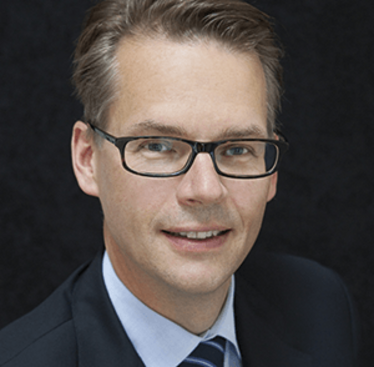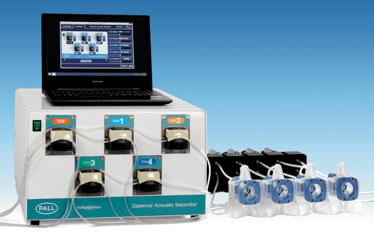
Breaking the Bioprocessing Mold
Manufacturers have gotten to grips with the complexities of batch-based bioprocesses, but breaking into the realm of continuous bioprocessing can lead to even greater efficiency.
sponsored by Pall Biotech

In any production environment, it is generally accepted that there are eight sources of waste: defects, overproduction, non-utilized talent, motion, transportation, waiting, inventory and extra processing. Many industries have reduced their waste by turning to “Lean” thinking and ‘one piece flows’ – or continuous manufacturing. Continuous manufacturing can deliver higher productivity and more consistent quality in a smaller footprint, with shorter lead times; and this has revolutionized the automobile industry.
What about the pharma industry? Steps have been made to implement continuous processes for small-molecule drugs, but it’s a different story for biopharmaceuticals. For the most part, continuous bioprocessing efforts have been limited to just a few steps, such as perfusion cell culture. Michael Egholm, Vice President/General Manager of Biopharmaceuticals at Pall, believes in much greater potential for continuous bioprocessing.
What inspired your focus on continuous bioprocessing?
Continuous bioprocessing has been a discussion within the industry for a very long time, but nobody has really done anything about it in terms of developing the necessary technologies. The analysis I did with my team showed that the benefits of continuous bioprocessing were so great that someone simply had to do something. We considered our options and decided, about eight months ago, to break the cycle by proactively investing in technologies that help realize the promise of continuous bioprocessing.
Of course, it is easier said than done. Continuous bioprocessing is a difficult field to break into; few companies are using it and few tools are available. As a long-standing supplier of high quality processing systems with a strong and loyal customer base, we knew that we had the technical capability to jumpstart this evolution of the biopharmaceutical industry. Not only is it a big transformation for us, but also for the whole biopharma industry.
What does the industry want from continuous bioprocessing technologies?
Economics are very important, but actually my biggest take-away from all of our customers is that people want robust platforms – meaning that they work every time. Reliability or robustness is desirable for any piece of equipment, but even more so in continuous technologies where the line, by definition, is running constantly. Platform technologies are also key because they keep the continuous process simple and avoid the need for optimization beyond some minor fine-tuning; in other words, implementing a continuous bioprocess is no longer about climbing a huge technology mountain. The technology can be rolled out and implemented quickly.
Some of the critical bottlenecks in both batch processing and continuous processing include centrifugation and/or depth filtration for cell removal and chromatography for primary capture. These are perhaps the least efficient parts of the bioprocess and are not easily convertible into a continuous process. New technology was needed to make this happen. To achieve continuous clarification, we’ve combined acoustic wave technology with depth filters into a platform technology that works across many different antibodies. The big question: is the industry ready for a full-scale system? It takes time for companies to become comfortable with new technology. Continuous bioprocessing is so new that I think it’s important to first give people the opportunity to try out benchtop systems – and to feedback on what they need in a large-scale system.

How do you plan to overcome the challenges?
Focusing on continuous bioprocessing has been a significant game changer for Pall. To really understand continuous bioprocessing and to build up expertise, we opened a laboratory at our New England Center of Excellence in 2015. There, we have been running a continuous process all the way from bioreactors through sterile filtration of the purified drug substance. All of this is in a significantly reduced footprint of what it would have taken for batch processing.
I am very proud that we concluded our negotiations with FloDesign Sonics in 2015. We now have an exclusive license for acoustic wave separation technology that allows cell removal or clarification to be performed in a continuous step without a centrifuge. From a regulatory standpoint, the process steps that impact the CQAs (critical quality attributes) in a continuous process are the same as the ones used in batch processing. We’ve launched three continuous enabling technologies so far: the Cadence Acoustic Separator (CAS) benchtop system (for continuous clarification), the Cadence BioSMB Process Development system (for continuous capture and purification), and the Cadence Inline Concentrator (for single-pass tangential flow filtration) And we’ve committed to launching more. Later this year, we plan to launch a full-scale version of BioSMB, and in 2017 we’ll be launching a full-scale CAS system and the Acoustic Wave Separation Benchtop for perfusion.
It’s a little scary to commit to these dates (but there’s nothing like pressure to get something done!). The continuous bioprocessing puzzle requires many pieces and, since the technology is so new, it’s crucial that we receive customer feedback to help us further refine the solutions. For example, the feedback we receive from our recently launched benchtop CAS system will be invaluable when it comes to developing the full-scale system. Moreover, the benchtop system also allows users to become familiar with the technology before the full scale system is launched. If we’d just jumped straight into full-scale systems, we could have missed out on an invaluable opportunity to learn about what matters most to the industry.
What do you feel are the main benefits?
There are many advantages to going continuous; reducing waste and cost to name two. And regulators are also keen for companies to review their options – and that includes tools that enable ongoing quality monitoring. Nearly every other industry is using continuous processing so why can’t biopharma also use it to achieve greater throughput at lower costs?
With batch-based processing, much of the equipment in a bioprocessing facility stands unused for most of the time. Continuous processing is about using the equipment all the time to perform processes on a much smaller scale, with a smaller footprint (usually around 70 to 80 percent smaller footprint compared with batch processing) – and the lower associated costs.
How has the industry reacted to your focus on continuous bioprocessing?
We’ve only been talking about continuous bioprocessing for around eight months, but the industry response has been really positive. We’re seeing many of the major players taking steps towards continuous bioprocessing – whether it’s just one step or the whole gambit. And everyone has their own bias or view on the major hurdles.
The challenges of continuous bioprocessing can only be solved if we work together. Batch-based processing has served biopharma and patients very well, but does not enable further process improvements. Eventually, the industry must update and improve its processes. I don’t think everyone will adopt a fully continuous bioprocess stream, but there are some logical steps that can be taken, such as implementing a continuous process just for the clarification step, that can deliver enormous benefits and savings.

Making great scientific magazines isn’t just about delivering knowledge and high quality content; it’s also about packaging these in the right words to ensure that someone is truly inspired by a topic. My passion is ensuring that our authors’ expertise is presented as a seamless and enjoyable reading experience, whether in print, in digital or on social media. I’ve spent fourteen years writing and editing features for scientific and manufacturing publications, and in making this content engaging and accessible without sacrificing its scientific integrity. There is nothing better than a magazine with great content that feels great to read.



















